Taking a Kailash Mansarovar Yatra from Australia involves an interesting detour via Nepal. Kathmandu is a majestic point of entry accompanied by a mixture of spiritual and cultural vigor, offering an opportunity for an initial period of acclimatization into the spiritual aura of the Himalayas before proceeding to the chargingly hostile terrains of Tibet. This route confers the uniquely mixed experience of culture and high scenic beauty to prepare the pilgrims for the recent harsh but spiritually enriching sojourn.
This blog “Kailash Mansarovar Yatra from Australia via Nepal” will serve as your better guide to the planning and undertaking of the Kailash Mansarovar Yatra from down under focusing on the popular and easy Nepal route. We will cover everything from visa matters, travel arrangements, packing lists, and health considerations to make sure that you are perfectly ready for this rare spiritual expedition. Let us together explore the realms of the functional and the deeply spiritual landing from down under to the mystic domains of Mount Kailash.
Kailash Mansarovar Yatra Significance
The Kailash Mansarovar Yatra is more than a journey, it is a sacred passage tracing back to faith, mythology, and deep spiritual energy. For Hindus, Buddhists, Jains, and Bon followers alike, this pristine pilgrimage bestows a rare opportunity to witness one of the most powerful centers of Earth spiritually.

Cultural and Spiritual Significance
Mt. Kailash is considered the abode of Shiva, one of the major gods of Hinduism. One parikrama of the mountain could wipe out a person's sins that have accumulated over many years, and performing it 108 times is said to result in moksha. For Buddhists, Kailash is the abode of Demchok (Chakrasamvara), the representation of supreme bliss. The Jains regard it as being the place where Rishabhadeva, the primary Tirthankara, attained nirvana. The Tibetan Bon people regard it as sacred, considering it the spiritual seat of their founder, Tonpa Shenrab. Mansarovar nearby, which emerged from the creative mind (Manas) of Lord Brahma, is considered one of the most sacred waters in the world. Its crystal-clear waters are said to cleanse the soul and purify one of former karmas through a dip.
Additionally, coming from Australia, the journey via Nepal provides a richly layered cultural experience-from the temples and traditions of Kathmandu to the Tibetan highlands-creating a bridge from modernity to ancient veneration.
Natural Significance
Situated in the remote Tibetan Plateau, Mount Kailash rises to 6,638 meters and has never been climbed upon due to religious beliefs. This iconic four-faced mountain stands in alignment with the four cardinal directions and is said to represent the axis mundi, the center of the universe. The lake at 4650 meters above sea level is one of the highest freshwater lakes in the world and reflects the sky very calmly and in an almost otherworldly manner.
Learn More About: Kailash Mansarovar Yatra
Why Choose the Nepal Route?
That said, it just has better-featured advantages that make Nepal the most chosen route for many international pilgrims, especially from far lands like Australia.
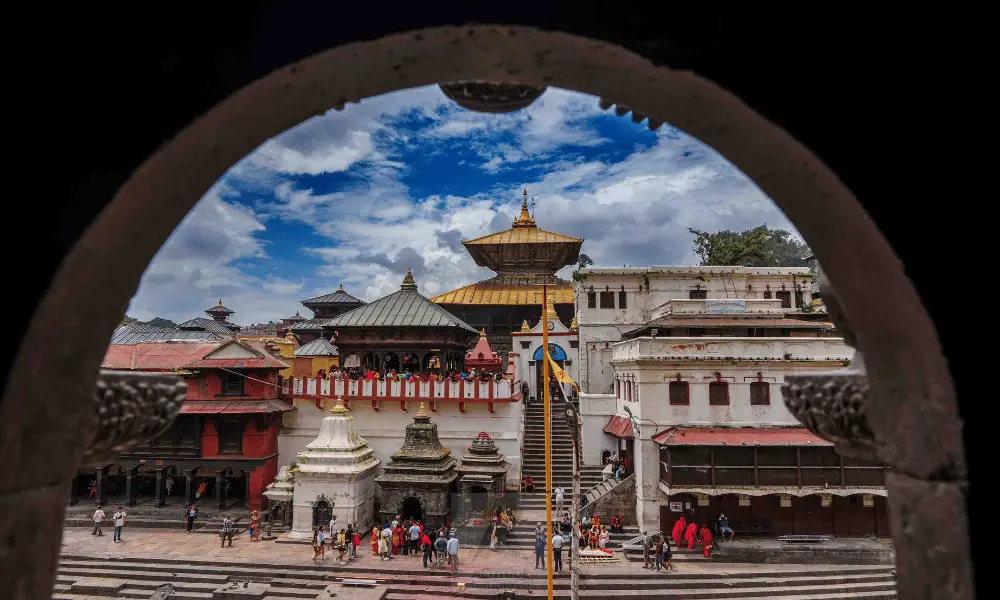
- Gradual Acclimatization: The journey will commence in Kathmandu at 1,400 meters. The itineraries allow gradual ascent to various altitudes along the way (Kyirong, Saga, Mansarovar) if you’re going via drive combined with crucial acclimatization days. This slow and steady process is important to prevent altitude sickness, a huge health risk at altitude.
- Established Infrastructure: Over the years, Nepal has established itself as one of the most popular routes for Kailash pilgrimage. The country being landlocked has various land routes connecting with Tibet which makes it easier for pilgrims to travel using the overland route from Nepal. Moreover, it also is the only country which provides direct flight connectivity to Lhasa; one of the major ways to reach Kailash Mansarovar Yatra.
- Cultural Immersion: The Nepal route offers opportunities for the pilgrimage to offer rich cultural experiences. From ancient temples and stupas in the Kathmandu Valley to traditional villages and Buddhist monastic institutions on the route up to the Tibetan border, pilgrims witness the vibrant Himalayan culture.
- Scenic Beauty: The overland route from Nepal is a dramatic setting for landscapes in transition. Nepal's green valleys and terraced hills would give way to the barren, high-altitude plains and snow-capped peaks of the Tibetan Plateau. The daylight view of the Himalayas, including the far Cortina of Everest (Shishapangma from the Tibetan side), are daunting.
- Convenience in Visa Processing: The Chinese Group Visa, required to enter Tibet from Nepal, is usually processed in a group at the Chinese Embassy in Kathmandu by your tour operator, making it simpler for the pilgrims.
Also Read: How Difficult is Kailash Mansarovar Yatra?
Travel Requirements from Australia

Planning and executing a successful Kailash Mansarovar Yatra involves a detailed preparation on the travel requirements. Here are some essentials for those who want to visit Kailash from Australia:
- Passport: Australian passport holders need to ensure their passports are having an expiry date which is at least 9 months beyond their date of intended return and have enough blank pages for Visa and entry/exit stamps.
- Tibet Travel Permit: Tibet Travel Permit is an invitation from the Tibetan authorities to let the travelers visit Tibet. Anyone intending to visit the Kailash Mansarovar region must possess a Kailash Mansarovar Yatra permit. Only after gaining the permit can the Chinese group visa be applied for the travellers. This is generally done by the Kailash tour operators you’re travelling with.
- Visa: For any foreign nationals intending to participate in Kailash Mansarovar Yatra via Nepal are required to have two visas; Nepalese visa and Chinese Group visa. One can get an on-arrival Nepalese visa once you arrive in Kathmandu. However for Chinese Group Visa, you need to proceed through your tour operators to apply for it which normally takes 4-5 business days. The group visa needs to be applied once the pilgrims reach Kathmandu.
- Travel Insurance: Absolutely necessary. One should buy comprehensive travel insurance covering high-altitude trekking, medical emergencies, helicopter evacuation, and hospitalization. Medical facilities are minimal in these remote areas, and the evacuation costs are very high. Make sure your insurance has coverage higher than these costs.
Journey from Australia to Kailash
Planning a pilgrimage from Australia to the remote heights of Kailash could seem aghast, but with well-connected flight routes and structured travel arrangements through Nepal, it is more within reach than ever. This journey bridges continents and cultures, ushering towards a place where gods and nature come face to face in their rawest form.
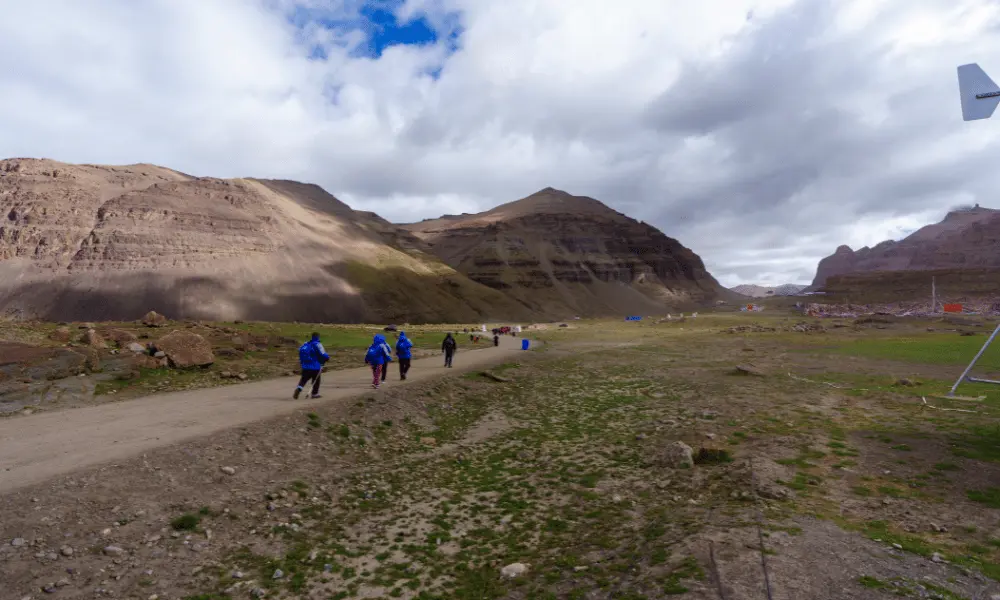
Australia to Nepal
Your spiritual journey kicks off from Australia, flying to Kathmandu. One-stop flights are available from cities like Sydney, Melbourne, and Brisbane via Doha (for Qatar Airways), Singapore (for Singapore Airlines), or Kuala Lumpur (for Malaysian Airlines). The average duration of the flight ranges between 14 and 18 hours depending on the layover. Upon your arrival, you usually spend a couple of days exploring around Kathmandu for the Yatra preparations: acclimatization, visiting temples, and processing all visas and permits.
Nepal to Kailash
There are three major routes to Kailash from Nepal, overland, helicopter and flight routes:
The Overland Route Through Kyirong
This route is an incredible drive from Kathmandu all the way to the Rasuwa border at Kerung, then on many days by road across the Tibetan plateau. After crossing into Tibet, travelers stop in towns like Saga and Parayang before heading to Lake Mansarovar and Darchen, the base for Mount Kailash. This route is longer (usually 14–16 days in total), gives slow altitude gain, and awesome views of the Himalayas.
- Kathmandu-Syabrubesi-Kerung -Saga-Mansarovar-Darchen (base of Kailash)
- 3-day Kora around Mount Kailash via Dirapuk, Dolma La Pass, and Zutulpuk
Helicopter Route via Simikot and Hilsa
It is quicker if you have less time at your disposal, or if you want to make the trip a bit more adventurous. The main land travel being available is, flying into Nepal from Kathmandu to Nepalgunj and then onward to Simikot. Here, one boards a helicopter to Hilsa near the Tibet border. After getting into Tibet, the rest of the journey is by road to Kailash. This route normally lasts for about 10 to 12 days, and it is dependent on weather conditions, with delays quite likely during the monsoon months.
- Kathmandu-Nepalgunj-Simikot-Hilsa-Taklakot-Mansarovar-Darchen (base of Kailash Kora)
- 3-day Kora around Mount Kailash via Dirapuk, Dolma La Pass, and Zutulpuk
Flight Route via Lhasa
Ideal for those craving some good amounts of culture and slow ascent, the road via Lhasa is the way to go. It begins with a morning flight from Kathmandu to Lhasa, where one spends, say, two days getting to know the old city, the Potala Palace, Jokhang Temple, and numerous other Tibetan Buddhist sites. The trip is completed via land routes from Shigatse through Saga and Mansarovar Lake till Darchen. The route facilitates gradual acclimatization and imbues one with a strong vibe of Tibetan culture. Although a bit heavier on the pocket and somewhat more time-consuming, it is often thought to be the most comfortable and rewarding option.
- Kathmandu-Lhasa-Shigatse-Saga-Mansarovar-Darchen
- 3-day Kora around Mount Kailash via Dirapuk, Dolma La Pass, and Zutulpuk
Read More: How to Reach Kailash Mansarovar from Nepal?
Recommended Packages
There are numerous routes with varying lengths and varying setups for the Kailash Mansarovar Yatra-inches-good package to select. Here are some options for every type of pilgrim accessing either a group tour or a private spiritual retreat.
Kailash Mansarovar Yatra by Drive
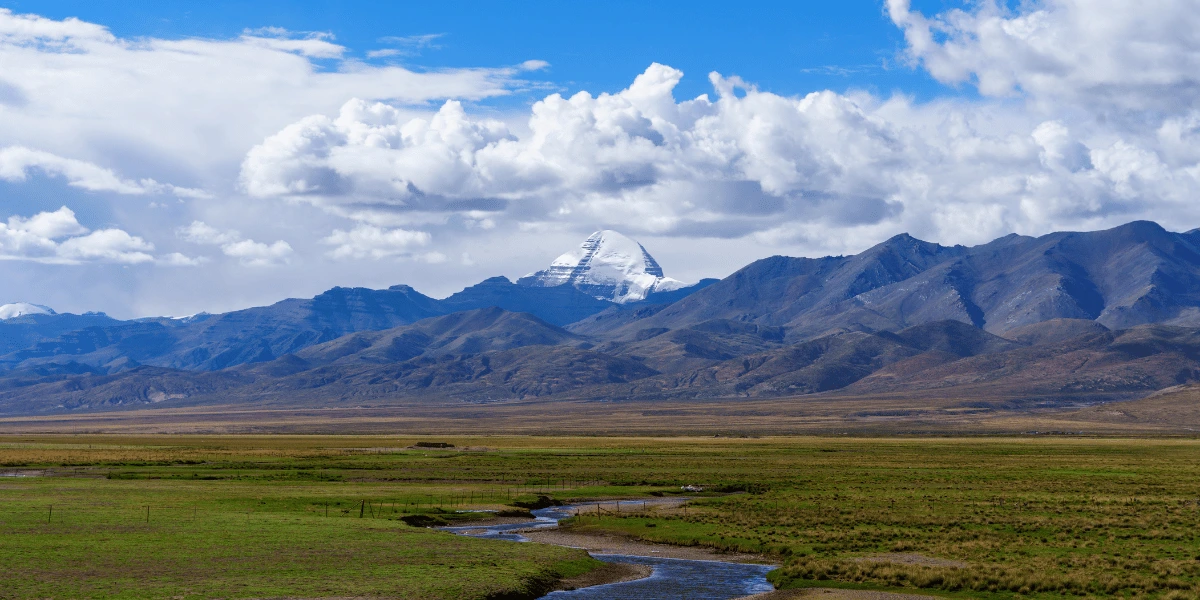
Start your spiritual quest with an overland journey through the Kyirong border into Tibet. The scenic overland trip offers spectacular views of Himalayan landscapes. It gives a slow exposure to the increased altitude-well prepared for the sacred journey ahead to Mount Kailash and Lake Mansarovar.
Outline Itinerary
|
DAY 01: Kathmandu Arrival. |
|
DAY 02: Visa Application, Kathmandu Sightseeing. |
|
DAY 03: Bhaktapur Sightseeing, Nagarkot Stay. |
|
DAY 04: Chandragiri and Swayambhunath Sightseeing. |
|
DAY 05: Packing and Final Preparation. |
|
DAY 06: Drive to Dhunche or Syabrubesi or Timure. |
|
DAY 07: Drive to Kyirong. (2850 m) |
|
DAY 08: Kyirong Acclimatisation. |
|
DAY 09: Drive to Saga. (4500 m) |
|
DAY 10: Drive to Lake Mansarovar. (4600 m) |
|
DAY 11: Drive to Darchen. (4700 m) |
|
DAY 12: Drive to Yama Dwara, Trek to Deruphuk. (5050 m) |
|
DAY 13: Trek to Zuthulpuk. (4800 m) |
|
DAY 14: Zuthulphuk to Saga. |
|
DAY 15: Drive back to Kyirong. (2850 m) |
|
DAY 16: Drive to Kathmandu. |
|
DAY 17: Transfer to Airport. |
Learn More: Kailash Mansarovar Yatra by Drive via Kyirong
Kailash Mansarovar Yatra by Heli
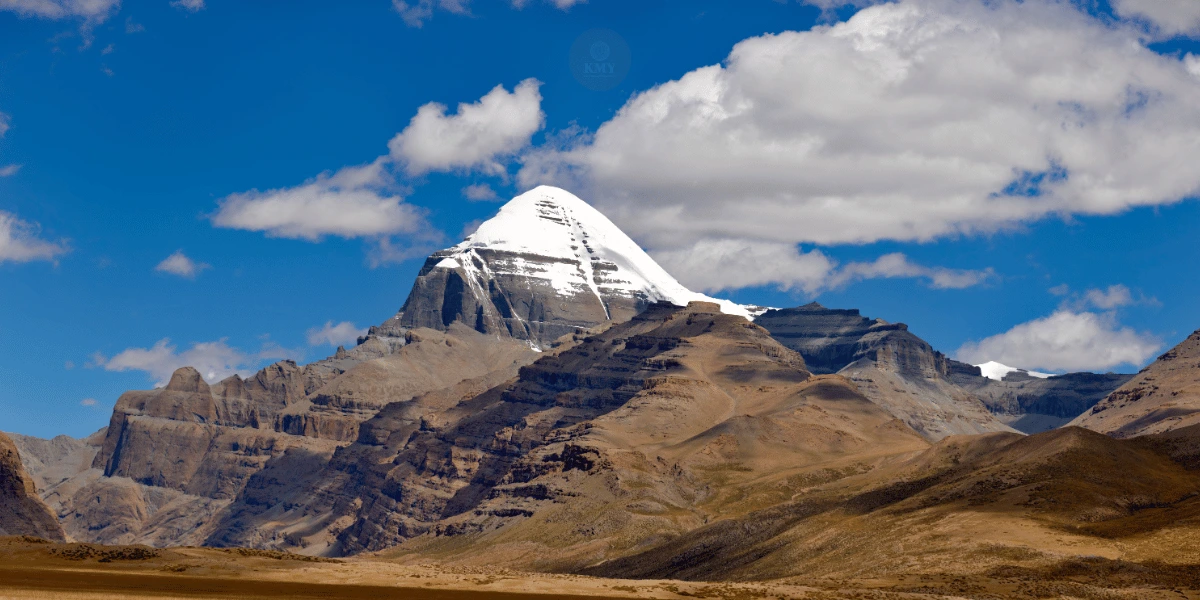
Alternatively, the helicopter route could be taken for convenience and speed. It saves precious time, with views of deep valleys and towering peaks, an option preferred by those who want a short yet spiritually rewarding pilgrimage.
Outline Itinerary
|
DAY 01: Kathmandu Arrival. |
|
DAY 02: Visa Application, Kathmandu Sightseeing. |
|
DAY 03: Bhaktapur Sightseeing. |
|
DAY 04: Chandragiri Sightseeing. |
|
DAY 05: Packing, Fly to Nepalgunj. |
|
DAY 06: Fly from Nepalgunj to Simikot. (2812 m) |
|
DAY 07: Simikot to Hilsa to Taklakot. (3900 m) |
|
DAY 08: Acclimatisation day at Taklakot. |
|
DAY 09: Drive from Taklakot to Lake Mansarovar. (4650 m) |
|
DAY 10: Drive to Yama Dwara, Trek to Derapuk. (5050 m) |
|
DAY11: Trek to Zuthulpuk. (4800 m) |
|
DAY 12: Zuthulpuk to Hilsa or Simikot. |
|
DAY 13: Hilsa to Simikot, Fly back to Kathmandu via Nepalgunj. |
|
DAY 14: Departure. |
Learn More: Kailash Mansarovar Yaatra by Heli via Hilsa
Kailash Mansarovar Yatra Private Tour by Drive
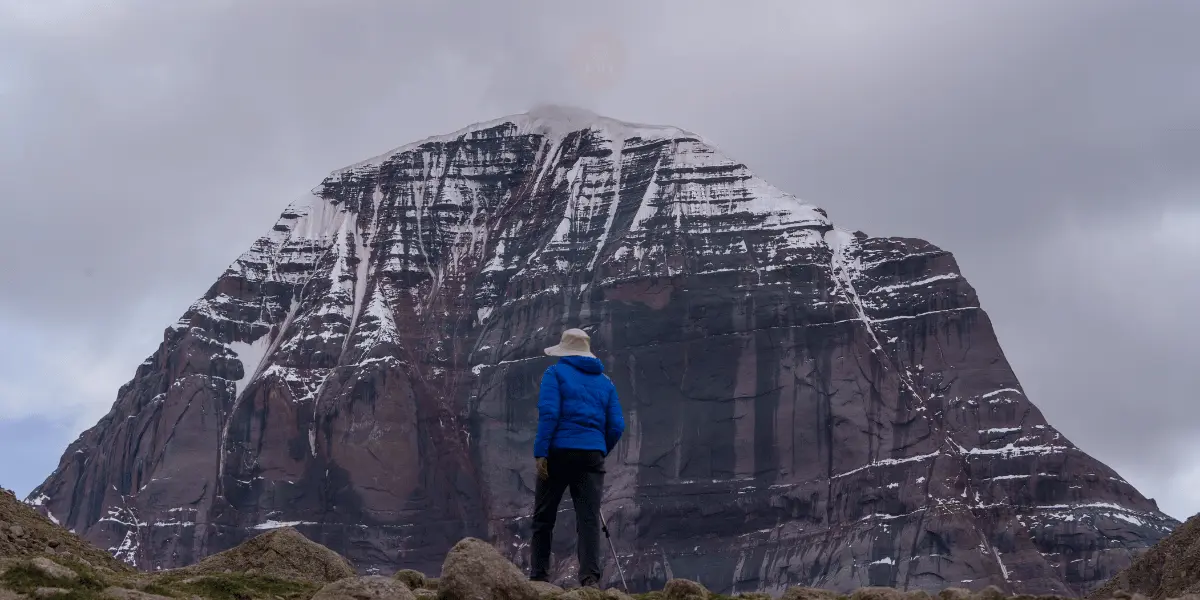
If you are looking for something more personal, then go for the private tour according to your schedule and want. This bespoke pilgrimage assures you of full assistance, full flexibility, and the ability to linger and take your time in Kailash Mansarovar Yatra, making it truly peaceful and deeply personal.
Outline Itinerary
|
DAY 01: Kathmandu Arrival. |
|
DAY 02: Visa Application, Kathmandu Sightseeing. |
|
DAY 03: Bhaktapur Sightseeing, Nagarkot Stay. |
|
DAY 04: Chandragiri Sightseeing. |
|
DAY 05: Packing and Final Preparation. |
|
DAY 06: Drive to Dhunche or Syabrubesi or Timure. |
|
DAY 07: Drive to Kyirong. (2850 m) |
|
DAY 08: Drive to Saga. (4500 m) |
|
DAY 09: Drive from Saga to Lake Mansarovar. (4650 m) |
|
DAY 10: Drive to Darchen. (4700 m) |
|
DAY 11: Drive to Yama Dwara, Trek to Deraphuk. (5050 m) |
|
DAY 12: Trek to Zuthulphuk. (4800 m) |
|
DAY 13: Zuthulphuk to Saga. |
|
DAY 14: Drive back to Kyirong. (2850 m) |
|
DAY 15: Drive to Kathmandu. |
|
DAY 16: Transfer to Airport. |
Learn More: Kailash Mansarovar Yatra Private Tour
Kailash Mansarovar Luxury Tour Package

Take a once-in-a-lifetime spiritual journey with our Kailash Mansarovar Yatra Luxury Tour, where ancient worship meets modern comfort. Unlike the lengthy general pilgrimage, this premium experience provides seamless transit, utmost luxury accommodations, personal service, and expert guidance, allowing you to fully focus on the sacred essence of Mount Kailash and Lake Mansarovar.
Outline Itinerary
|
DAY 01: Kathmandu Arrival. |
|
DAY 02: Visa Application, Kathmandu Sightseeing. |
|
DAY 03: Bhaktapur Sightseeing, Nagarkot Stay. |
|
DAY 04: Chandragiri Sightseeing. |
|
DAY 5: Fly to Timure, Drive to Kyirong. |
|
DAY 6: Kyirong Acclimatization. |
|
DAY 07: Drive to Saga. |
|
DAY 08: Drive from Saga to Lake Mansarovar. |
|
DAY 09: Drive to Darchen. |
|
DAY 10: Drive to Yama Dwara, Trek to Deraphuk. |
|
DAY 11: Trek to Zuthulphuk, Drive to Darchen. |
|
DAY 12: Drive to Kyirong. |
|
DAY 13: Drive back to Timure, Heli to Kathmandu. |
|
DAY 14: Departure, Farewell! |
Learn More: Kailash Mansarovar Luxury Tour Package
How to Book?
To book your trip and secure your spots for the Kailash Mansarovar Yatra, you just need to follow some simple steps:
STEP 1: Check Availability and Discuss Your Plans.
Contact us with your preferred travel dates. We'll confirm availability and provide detailed information about the entire tour arrangements.
STEP 2: Submit Passport Details.
Once your dates are finalized, please email a clear, scanned copy of your passport to [email protected]. Important: Passports must be valid for at least 9 months beyond your Yatra departure date.
STEP 3: Confirm Your Booking.
Confirm your reservation with an advance payment of USD 1,000 per person. Upon receipt:
- We will secure your accommodations and transport.
- We will initiate your visa processing.
Final Payment: The remaining balance is due 30 days prior to departure. Full payment is required by this deadline to finalize all arrangements.
Payment Options: USD cash or direct bank transfer.
Read Our: Booking Terms and Conditions
Best time to Visit Kailash
The period from May to Mid-September is ideal for visiting Kailash Mansarovar. The weather stays relatively stable during these months, with temperatures touching around 5 to 15 degrees Celsius during the day. Cold chills are typical after sunset. This season provides safer and easier trekking and traveling opportunities since mountain passes remain open and devoid of snow. Official recognition by the Chinese government of this period as a pilgrimage season ensures thousands of spiritual seekers and trekkers set out. Religious events of great significance such as the Saga Dawa Festival (which occurs in May or June) mark this period, celebrating the life of Lord Buddha.
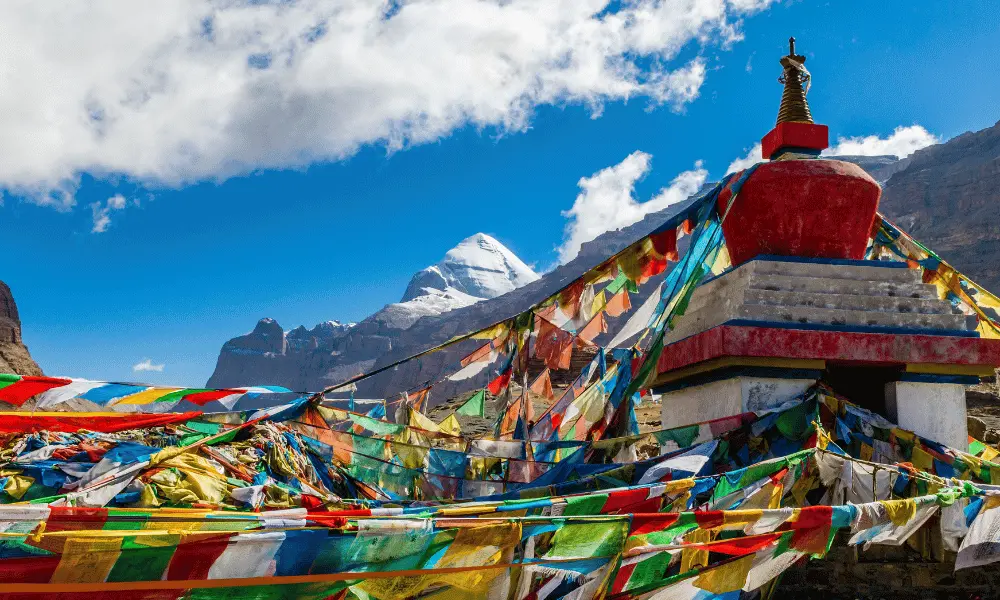
Travelling outside this window, especially between October and April, is highly discouraged due to severe winter conditions characterized by blizzards, freezing cold, and untouchable routes. Being a high-altitude region, it demands that any visitor must be well prepared for the rough terrain and should take all possible precautions against altitude sickness.
|
Months |
Weather Conditions |
|
May to September (Ideal Season) |
|
|
October to April (Off Season) |
|
Read More: Best time to visit Kailash Mansarovar
Travel Tips
Set for a high-altitude pilgrimage? You shall want more than spiritual readiness. Become practically prepared. From essentials to packing to acclimatization and visa details, here are a few helpful travel tips that shall keep your Kailash Yatra safe, easy, and soul-enhancing.
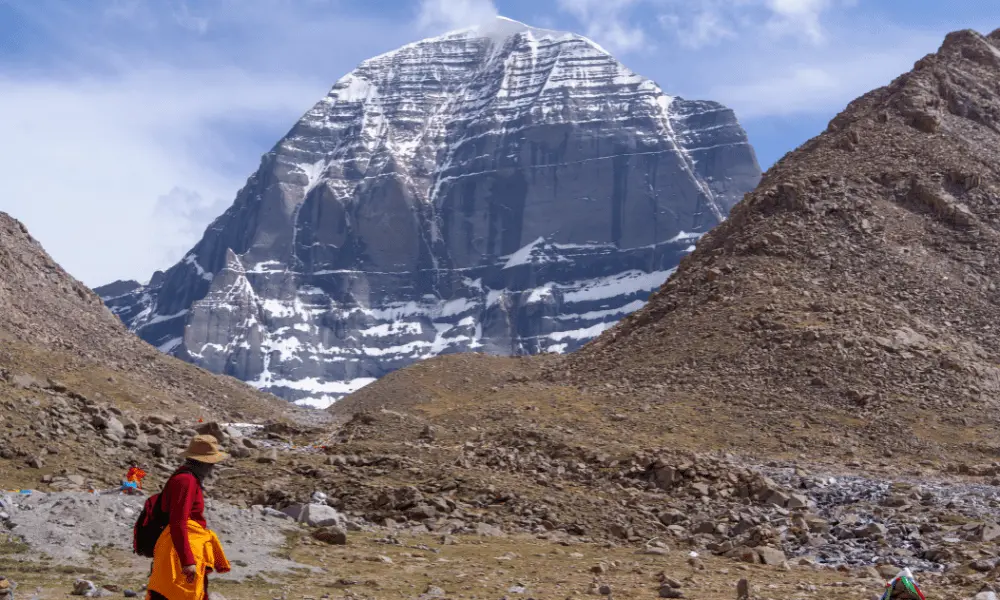
Health and Acclimatization
There is more to health preparation at high altitude. Begin physical training for at least 3-4 months, focusing on cardiovascular and strength training. Your itinerary ought to be one that allows for slow ascent and acclimatization, including rest days at intermediate altitudes. Drink much water (3-4 liters per day); eat easily digestible, carbohydrate-rich food. Consult a physician about preventive medicine like Diamox and know the signs of AMS. Attempt a medical check-up before departure.
Packing List
Layering remains the key when temperatures change. Pack thermals that will wick away moisture, a fleece jacket, an outer being waterproof and windproof, and possibly a down jacket for warmth. Have well-broken-in hiking boots that are waterproof, coupled with a few pairs of socks and trekking poles. Personal equipment such as a daypack, sleeping bag, and headlamp are indispensable, while a trustworthy first-aid kit should contain your own medications and sun protection. Carry a high-capacity power bank, a universal adapter, and copies of all important documents. High-altitude medical emergency and evacuation insurance is a must.
Read More: Kailash Mansarovar Yatra Packing Guide
Health and Fitness Tips
The Yatra imprints great demand on flesh and bone, more so on the Kailash Kora. Above 4,500 meters is the average trekking level, with Dolma La Pass being the highest point at 5,600 meters.
That is why we recommend a pre-yatra training which one should do atleast 1-2 months before the Yatra. Kick off with a tough fitness training program that will work on your cardio (brisk walking, jogging, cycling, swimming for 30-60 minutes a day with an increase in duration), strength training (for legs, core, and back, including squats, lunges, and step-ups), and flexibility (yoga stretches).
Other Practical Tips
For logistics and seamless support, select a tour operator reputable in the field of Kailash tours. Respect all local customs concerning activities, and always treat the site as sacred. Depending on a location that lies in the Himalayas, the weather could change in the blink of an eye, and there could be last-minute changes to the itinerary. There may be times when you find little or no communication, so give someone the heads-up. Consider responsible tourism by reducing the impact of the visit to as little as possible. Last but definitely not least, prepare yourself emotionally and focus on the spiritual significance of this extraordinary aspect of the pilgrimage.
Indepth Read: Kailash Mansarovar Yatra Preparation
Conclusion
The pathway from Australia to the sacred realms of Kailash Mansarovar by way of Nepal is an exceptional excursion for a mind-shifting journey. Through Kathmandu-one of the zenith of Nepalese culture and life-for ages to mystical and ancient Tibetan monastic sites; from highways that barely see sunlight to majestic passes wrapped in clouds and cutting through Himalayan ranges and windswept Tibetan plateau-the journey does not simply involve crossing a political boundary. It is passing through some layers of history, spirituality, and, in his or her, transformation. Every sunrise in the Himalayas and every prayer carried by the wind over Lake Mansarovar is now a transformation in his or her life.
For the contemporary seeker who has journeyed from the far corners of earth, this route beautifully joins the present with the eternal. Nepal's surging cultural and spiritual life adds an extra dimension to the experience, thus providing the perfect portal to Tibet's bare, inscrutable landscape. The Kailash Mansarovar Yatra is not merely a pilgrimage to a holy shrine but an invitation from the sacred to pause, ponder, and connect to something greater. Upon return, they do not come back merely with the photographs and stories but with a spirit less troubled, a heart fuller, and a soul willing to be touched by divinity.
Frequently Asked Questions (FAQs)
Here are some frequently asked questions about Kailash Mansarovar Yatra from Australia:
Can I go on a solo trip to Kailash?
No, you cannot go to Kailash Mansarovar on your own. The Chinese government only provides group visas for the Kailash Mansarovar Yatra, which can be applied through reliable travel agencies/Kailash tour operators in Nepal or Tibet.
How much does Kailash Mansarovar Yatra cost from Australia?
The cost for the Kailash Mansarovar Yatra depends on various factors like the route chosen, travel type, number of pax and numerous other factors. For group packages which are for a minimum of 20 people, the cost ranges from USD 3200-4500 per person. However, for private packages which accommodate only 4-6 people the cost comes in between USD 4500- 6500 per person depending upon the package type.
What are the major routes to Kailash from Nepal?
There are three main ways to get to Kailash Mansarovar from Nepal. They are overland via the Kyirong border, by helicopter via Nepalgunj, and by flight via Lhasa.
- KMY via Kyirong border: This is a good option if you are looking for a more adventurous trip. The journey from Kathmandu to Kailash is 10 days and you will need to cross the border between Nepal and China at Kyirong Border.
- KMY by helicopter via Nepalgunj: It is an expensive option, but also one of the fastest ways to get to Kailash Mansarovar. The helicopter tour takes about 1 day from Simikot in Nepal to Hilsa in Tibet.
- KMY via Lhasa with EBC: This route takes you through Lhasa, the capital city of Tibet, where both flight and drive options are available from Nepal. It also includes a visit to North Everest Base Camp (EBC) from the Tibet side.
Note: In case of any emergencies like the natural disasters that interrupt the way towards Kyirong border, alternative routes like Tatopani border or Korala border will be used to enter Tibet according to the authorities decision. If it happens so, the itinerary from day 3 will be changed accordingly.
Can a normal person go to Kailash?
Yes, a normal person can go to Kailash Mansarovar. However, it's essential to understand that the journey to Kailash Mansarovar is considered a challenging pilgrimage due to the high altitude, rugged terrain, and often harsh weather conditions. The trek involves both physical and mental endurance, so it's recommended to be in good health and physically fit before taking the journey.
Are there any age restrictions to visit Kailash?
No, there are no particular age restrictions to visit Kailash. However, the age limit for the Kailash Mansarovar Yatra varies depending on the route and the regulations set by the respective government authorities itself.

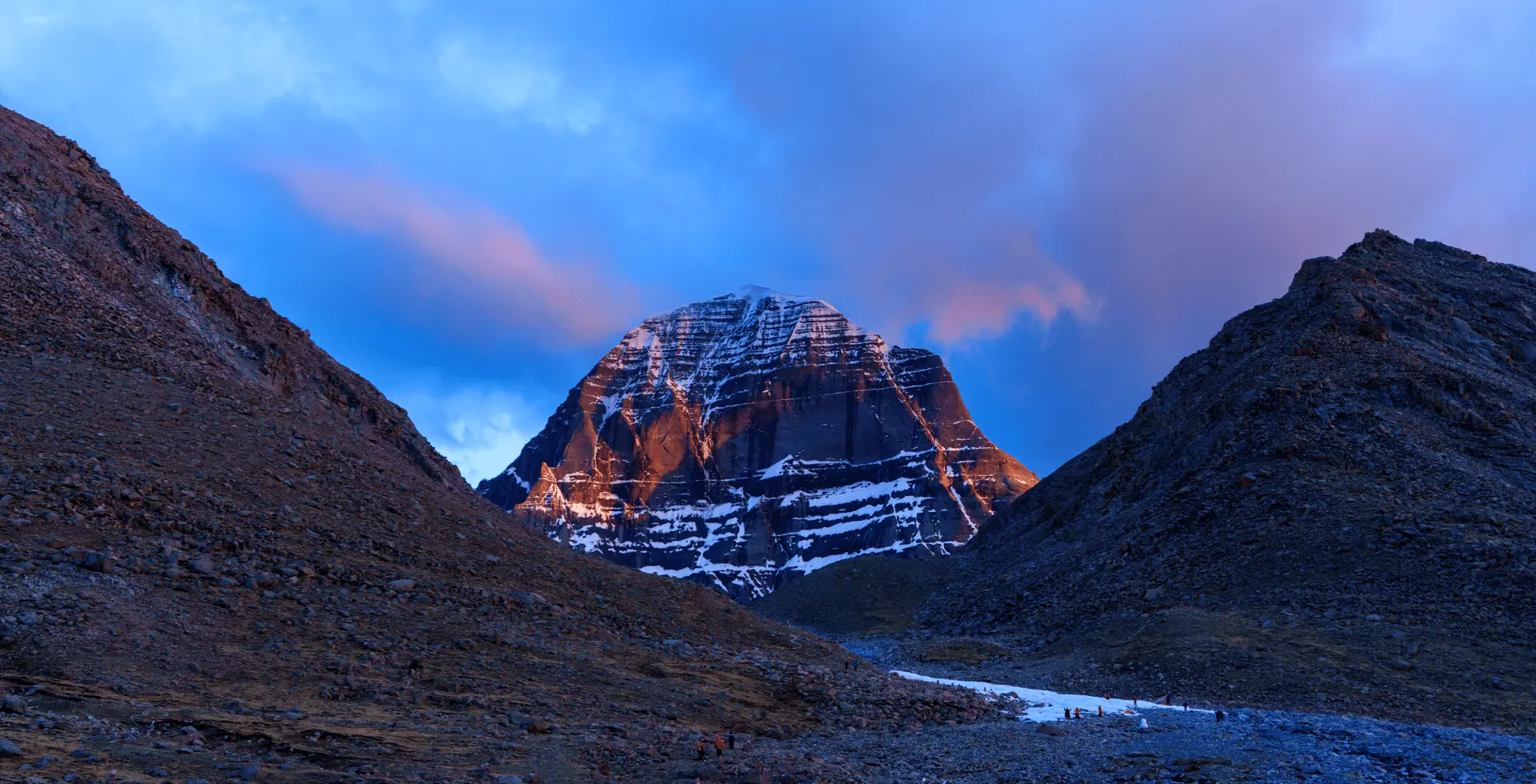
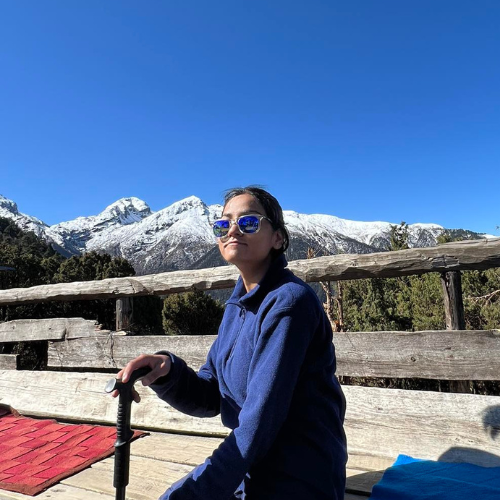 Mandira Itani
Mandira Itani